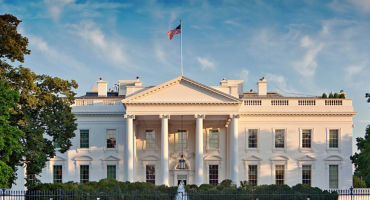COVID-era policy and subsequent lessons learned
The COVID-19 pandemic and economic shutdown unleashed unprecedented monetary and fiscal stimulus. In its “Statement on the Longer-Run Goals and Monetary Policy Strategy,” the Fed explains its decisions during that historic period. There are two key passages in the statement:
“The Committee judges that the level of the federal funds rate consistent with maximum employment and price stability over the longer run has declined relative to its historical average. Therefore, the federal funds rate is likely to be constrained by its effective lower bound more frequently than in the past. Owing in part to the proximity of interest rates to the effective lower bound, the Committee judges that downward risks to employment and inflation have increased. The Committee is prepared to use its full range of tools to achieve its maximum employment and price stability goals.“
“The inflation rate over the longer run is primarily determined by monetary policy, and hence the Committee has the ability to specify a longer-run goal for inflation.”
Taking these comments together, it is easy to understand why the Fed was so aggressive during the pandemic. The policymakers believed that the neutral rate had decreased over time, and therefore the risk of too little stimulus was greater than the risk of too much stimulus, a view bolstered by the belief that they knew how to solve the main problem caused by overstimulation — high inflation — mainly by raising rates.
The inflation over the past few years has thrown the wisdom of the first part of the Fed’s longer-run goals statement into question, because it made clear that the risk of too little stimulus was, in fact, not greater than the risk of too much stimulus. As inflation toward the end of the pandemic reached levels not seen since the 1970s, the Fed took considerable flak for keeping monetary policy too loose and failing to hike policy rates sooner as the economy revved back up. But while COVID may have busted the myth that high inflation had been permanently beaten, it reinforced the Fed’s other comment that “the inflation rate over the longer run is primarily determined by monetary policy.”
Throughout 2022 and 2023, the Fed assumed the mantle of taming inflation with vigor. Fed Chair Jerome Powell was asked numerous times if fiscal policy was responsible for inflation, and each time, he reiterated that inflation management is solely the Fed’s job and not that of fiscal authorities. The Fed’s conviction was strong enough that it was willing to risk economic recession to bring inflation back to its 2% target.
Recession, so far, has not materialized, and in many ways Powell has turned out to be correct. I do think deficit spending was one of the main reasons for inflation in 2021 – 2022, but it is hard to argue that fiscal spending contracted in 2023. We had a US$1.7 trillion deficit (larger than in 2022), which added approximately 1% to GDP, and yet inflation fell dramatically throughout the year. To the Fed, this has reinforced the idea that monetary policy is restrictive, with the policy rate higher than the neutral rate for the economy.
The other recent formative experience was the Silicon Valley Bank (SVB) crisis that began in March 2023. The potential contagion from this collapse was a real shock to Powell and his team, given that capital in the banking system was robust at the time and the Fed’s balance sheet was still quite large. The Fed reacted by temporarily expanding its balance sheet via the Bank Term Fund Program and yet still hiked interest rates by 75 bps. The success of this approach taught the Fed that a large-scale asset purchase (LSAP) was not necessary to solve a financial crisis.
To summarize the Fed’s lessons learned from the past few years:
- Lesson #1 — The risk of doing too little stimulus is not greater than doing too much stimulus.
- Lesson #2 — While the Fed’s balance sheet should be large enough to create an ample reserve regime, targeted use of the balance sheet, rather than LSAPs, can suffice when problems arise.
- Lesson #3 — Because the neutral rate is probably not much higher than it was before the pandemic, current policy rates are still restrictive, and that is why inflation has eased.























Monthly Market Review — October 2025
Continue readingBy